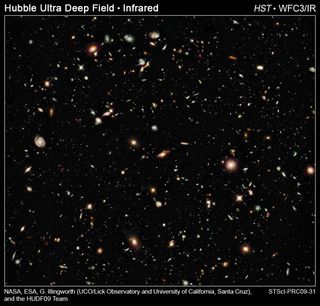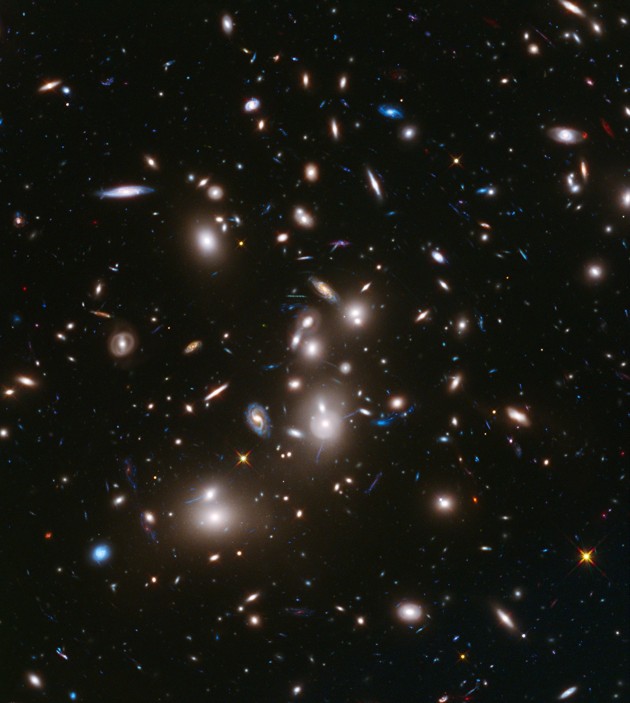Telescopes Are Placed in Space to View Distant Galaxies Primarily
Now there are a number of factors that dictate what an Astronomer can observe and the level of detail they can then see their objects with. B avoid the absorption of light or.

Nap Kepe Csodalatos Kep A Lofej Kod Rol 2013 08 01 Horsehead Nebula Space And Astronomy Hubble Space
B to avoid the absorption and distortion of the light or other radiations within the atmosphere of the Earth.

. A get closer to the observed objects. The James Webb Space Telescope wont just look for distance galaxies. Telescopes are placed in space to view distant galaxies primarily toA get closer to the observed objectsB avoid the absorption of light or other radiations in the atmosphere of the earthC avoid light pollution from the earths populated areasD avoid steering the telescope against the earths motion.
Gskyer AZ Space Astronomical 80mm Refractor Telescope. To avoid the absorption and distortion of the light or other radiations within the atmosphere of the Earth. Most of the images we see from Hubble show galaxies star clusters or gas clouds.
C avoid light pollution from the earths populated areas. Other radiations in the atmosphere of the earth. It will peer intensely at both exoplanets and planets of our own Solar System.
Asked In NDA MAN 8 years ago. This NASA photo shows the Hubble Space Telescope in May 2009 as Atlantis astronauts release it into space after its fifth and final overhaul. Telescopes are placed in space to view distant galaxies primarily B to avoid the absorption and distortion of the light or other radiations within the atmosphere of the Earth.
14 hours agoHubble is primarily an optical telescope viewing the cosmos in the same type of light we can see and it also has the ability to see into the. To avoid having to steer the telescope against the Earths motion. Question 33 Telescopes are placed in space to view distant galaxies primarily to get closer to the observed objects.
The telescope makes it easy to view cloudy nebulas star clusters and galaxies. 2 days agoThe James Webb Space Telescope JWST will take this idea to the extreme studying objects so distant that the telescope will essentially be looking back 135 billion years close to the start. 25 2021 PRNewswire -- NASAs James Webb Space Telescope launched at 720 a.
Telescopes are placed in space to view distant galaxies primarily to avoid the absorption and distortion of the light or other radiations within the atmosphere of the Earth THIS SET IS OFTEN IN FOLDERS WITH. The images sent back from Hubble are beautifully amazing and give us a peek deep. Get closer to the observed objects.
NASAs Hubble and Spitzer space telescopes have joined forces to discover nine of the smallest faintest most compact galaxies ever observed in the distant universe. Avoid the absorption of the light or other radiation in the atmosphere of the earth. Blazing with the brilliance of millions of stars each of the newly discovered galaxies is 100 to 1000 times smaller than our Milky Way galaxy.
Hubble launched into space on April 24 1990 and. Generally here are what Astronomers primarily use telescopes to see. THIS SET IS OFTEN IN FOLDERS WITH.
It has an aperture of 130 mm that allows the entrance of a large amount of light from the sky and helps you to view space objects. Bodes Galaxy M81 glows brightly enough to show up through binoculars but the larger the telescope you can point at it the better. But it sees primarily in the optical UV.
Hubble is in orbit right now making history by sending back around 10 to 15 gigabytes of images and data to astronomers every day. 14 hours agoHubble is primarily an optical telescope viewing the cosmos in the same type of light we can see and it also has the ability to see into the infrared and ultraviolet parts of the spectrum of light. Telescopes are placed in space to view distant galaxies primarily To avoid the absorption of the light or other radiations in the atmosphere of Earth What is the most important function of a.
To avoid the light pollution from the Earths populated areas. Telescope are placed in space to view distance galaxies primarily to. Avoid light pollution from the earths populated areas.
NASAs Webb Telescope Launches to See First Galaxies Distant WorldsPR NewswireWASHINGTON Dec. If you want the best telescope for viewing galaxies and planets then this product from Gskyer is the right one to go by. The Moon the Planets of our Solar System the Sun Deep Sky Objects Comets Stars Light pollution Novae Supernovae and Satellites.
Telescopes are placed in space to view distant galaxies primarily A to get closer to the observed objects. Julia Gustafson Cornell University. The James Webb Space Telescope is scheduled to launch in December 2021.
So far Hubble has examined over 25000 features in space including distant galaxies black holes and nebulas where stars are born. Telescopes are placed in space to view distant galaxies primarily to. Telescopes are placed in space to view distant galaxies primarily to area of its primary mirror or lens The light-gathering power of a telescope depends directly on the.
The telescope mount feature prevents extra motion and allows you to observe the object without any disturbance and interference. Particularly it is designed to view near-space objects during the night for it comes with basic equipment. Regarded as the successor to the Hubble Space Telescope it will peer deep into space and take images of distant astronomical objects.

Hubble Telescope Spots Most Distant Galaxies Space

Hubble Telescope Reveals Deepest View Of The Universe Yet Nature

The James Webb Space Telescope Launches Soon Here S What It Could Show Us Npr
Comments
Post a Comment